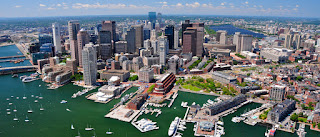by
A growing and dynamic city like Boston needs ample housing construction to keep up with the constant stream of new residents. And while the demand for housing in the Boston area has been sky high, developers have to get creative and aggressive to meet the city’s needs due to its size and infrastructure. In July, Boston had the ninth-most cranes of any city in the country, and housing permits were up 12 percent in 2017 compared to the previous year, according to the Greater Boston Housing Report Card. The construction boom is not only adding much-needed housing stock to the area, but it’s transforming neighborhoods as well as the city’s skyline.
“Boston is in a growth cycle right now,” says David Goldman, principal with New Boston Ventures. “It’s a combination of the city really promoting development and housing and just Boston being a city where people want to live.”
New job opportunities and business growth have helped expand Boston’s population, as the five-county area surrounding the city has gained over 360,000 new residents since 2000. Employment and wage rates have also increased, but so has the number of homeowners paying more than 30 percent of their income on housing — 35.8 percent of area residents were considered “cost burdened” in 2015 compared to 26.7 percent in 2000, according to TBF.
A sharp increase in housing demand exacerbated already-low inventory levels, driving up home prices in the metro area. Inventory woes continue to hamper sales and increase competition in the early part of this year. Politicians have taken to the issue, as Boston Mayor Martin J. Walsh has pledged to build 53,000 new housing units by 2030 and others have announced measures to loosen inventory.
For the full article click here.

Comments
Post a Comment